Are you thinking of planting Cordyline in your garden? Tropical plants are a great option for Australian gardens – not only do they offer a touch of paradise to your garden or home, but they’re perfect for our climate.
Cordyline plants are remarkable tropical plants, suitable for both indoor and outdoor growth. They’re easy to establish, easy to propagate and fairly easy to grow.
So, here is absolutely everything you need to know about planting Cordyline plants.
More...
What are Cordyline Plants?
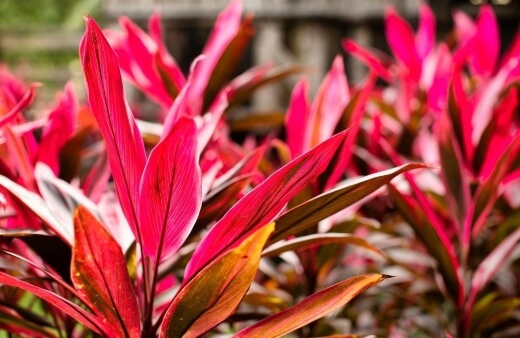
Cordyline plants are part of the Asparagaceae family and include 15 sub-cultivars. The species, which originates from the pacific islands of Southeast Asia, has large leathery leaves which range in colour from green, red, yellow, white, purple and burgundy.
Prized for their long, spikey leaves, Cordyline plants are often grown as a decorative, eye-catching addition to gardens or in pots inside the home.
Sometimes called the Hawaiian Ti plant, Cordyline plants are believed to be a mystical plant that brings the owner good luck and prosperous, long life.
Certain varieties of Cordyline also produce small, sweet-smelling flowers, which are followed by dark-coloured berries.
Types of Cordyline Plants
Each cultivar of Cordyline plants offers a unique and striking leaf pattern and colour. Here are a few of the most popular picks:
Cabbage Tree (Cordyline australis)Bearing a striking resemblance to yucca plants, the Cordyline australis has remarkably long and dark leaves, with a hardwood stem. | 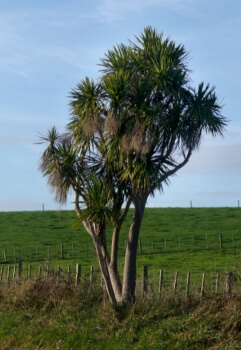 |
Cordyline fruticosa 'Calypso Queen'This cultivar has fantastically dark, ruby-maroon leaves, which are incredibly striking. This cultivar is great indoors. | 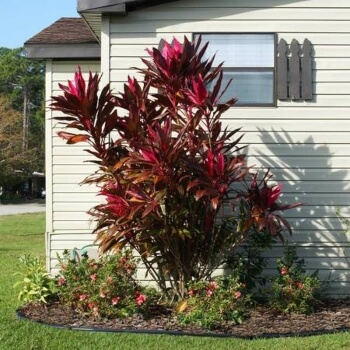 Source: myseedtopia.com |
Cordyline fruticosa 'Oahu Rainbow'This smaller cultivar has intricate dark green leaves with white and cream streaks along with the leaves. | 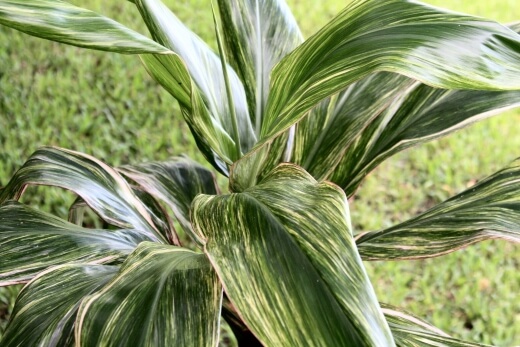 Source: palmpedia.net |
Cordyline fruticosa 'Hilo Rainbow'Similar to the Oahu cultivar, Hilo Rainbow has differently coloured foliage, starting with dark green at the base and fading into burgundy. |  Source: gardencentermarketing.com |
Cordyline fruticosa 'Firebrand'Another multi-coloured cultivar, the leaves of the firebrand transition from pink to maroon. | 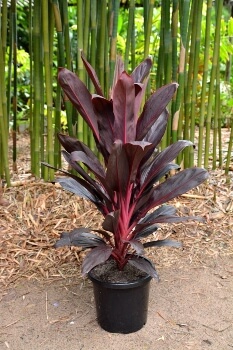 Source: bambooland.com.au |
Types of Cordyline Plants
Each cultivar of Cordyline plants offers a unique and striking leaf pattern and colour. Here are a few of the most popular picks:
Cabbage Tree (Cordyline australis)

Bearing a striking resemblance to yucca plants, the Cordyline australis has remarkably long and dark leaves, with a hardwood stem.
Cordyline fruticosa 'Calypso Queen'

Source: myseedtopia.com
This cultivar has fantastically dark, ruby-maroon leaves, which are incredibly striking. This cultivar is great indoors.
Cordyline fruticosa 'Oahu Rainbow'

Source: palmpedia.net
This smaller cultivar has intricate dark green leaves with white and cream streaks along with the leaves.


Get Your Free Guide:
Master Growing Australian Natives eBook
A Must Have Complete Guide for Every Australian Garden
Get Your Free Guide:
Master Growing Australian Natives eBook
A Must Have Complete Guide for Every Australian Garden
Cordyline fruticosa 'Hilo Rainbow'

Source: gardencentermarketing.com
Similar to the Oahu cultivar, Hilo Rainbow has differently coloured foliage, starting with dark green at the base and fading into burgundy.
Cordyline fruticosa 'Firebrand'

Source: bambooland.com.au
Another multi-coloured cultivar, the leaves of the firebrand transition from pink to maroon.
How to Grow Cordyline
These are hardy plants when grown in the right climate – which Australia has. They make excellent houseplants, happy to grow in pots but also do well when planted directly into the soil.
If growing outdoors, however, it is sometimes recommended to grow within a raised bed as Cordyline plants have an expansive root system – which can sometimes affect the growth of plants growing around them.

Light
Cordyline plants need plenty of bright light throughout the day. Green growing plants will often grow well in direct sunlight. However, cultivars with coloured leaves should be kept out of direct sunlight as it can cause the leaves to lose intensity.
Soil
Cordyline plants do best in rich, well-draining soil. If growing in pots, a perlite-rich mix of soil is advisable. A general P.H. balance between 6 and 6.5 is best.
Temperature & Humidity
It’s important to note that these are tropical plants, which means they prefer warmer, humid conditions. Often, when there is not enough humidity, it will result in a sudden leaf drop.
Humidity can be increased by means of a pebble tray or regular misting.
Propagating Cordyline
The most successful and often used method of propagating is by means of cutting. However, propagation by seed is also a possibility for certain cultivars.
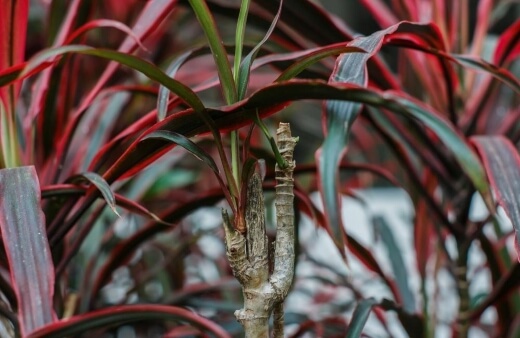
Taking a Cutting:
- Remove a stem cutting, about 7 to 12 centimetres from a mature, thriving plant.
- Remove the lower leaves and lay the cutting onto a seedling tray filled with a damp perlite mix.
- Keep your cutting in a warm room.
- Once small shoots begin to form, the cutting can be replanted.
Growing from Seed:
- Seeds can be removed from ripened berries. Simply squeeze the seeds out of the berries.
- Clean the seeds and leave them out to dry out fully before planting.
- Seeds can then be planted into a porous seeding mix to germinate—germination tales around 4 to 6 weeks.
Planting Cordyline Plants
Young plants grow happily in pots or directly in the ground. If choosing to grow in pots, it’s essential to choose a well-draining potting medium and choose a pot with adequate drainage possibilities.
Repotting plants isn’t needed unless the plant becomes extremely overgrown. Once roots begin to grow out of the drainage holes, you’ll know it’s time to replant. In general, avoid replanting more than every 2 to 3 years.
Caring for Cordyline Plants
When it comes to Cordyline care, you will need to ensure you keep up with semi-regular watering, fertilising and pruning.

Watering Cordyline
As a rule of thumb, Cordyline plants only really need water when the top layer of soil dries out completely. When watering, it’s important to allow the water to drain out completely before placing it back onto a tray or saucer.
When watering, it is possible to place the plant under a tap and really soak the soil. Then, leave for 5 minutes to drain.
Fertilising
Plants can be fed with a slow-release fertiliser during the spring. Pellets or granular fertiliser are the best choices for this species. It is important to avoid fertilising during the winter completely.
Pruning Cordyline
For ultimate aesthetic appeal, it is recommended to keep leaves at various lengths. Older plants also tend to have lots of leggy growth; this can be pruned back to encourage a more compact look.
Overwintering
While it’s not always necessary, during particularly cold spells, the cold and frost can affect plant growth and health, which is why it is advisable to bring plants indoors over winter or to tie the foliage up with organic twine to protect the foliage.
Before tying, ensure the foliage and soil is dried out properly to avoid any kind of rot or mould.
Common Cordyline Pests, Problems & Diseases
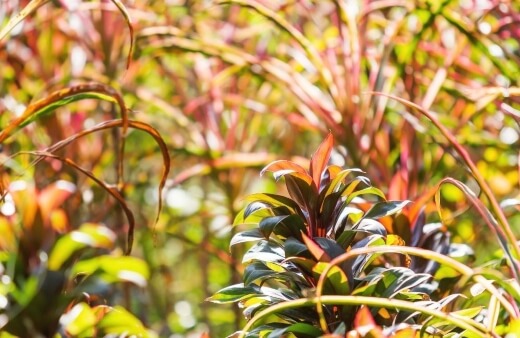
As with most tropical plants, Cordyline plants can be susceptible to common pests such as aphids, spider mites, mealybugs and scale insects.
Luckily, there is a range of home remedies you can use to manage these infestations. In sub-optimal conditions, bacterial leaf spot and root rot can also occur.
Other common issues include:
Browning Tips
Browning foliage is often a sign of impacted plant health. This can be due to overwatering or underwatering, over fertilisation or extremely dry conditions.
Yellowing Leaves
Yellowing leaves are also a sign of a water issue. Most often, it is caused by overwatering or that it could be experiencing too much direct sunlight.
Be sure to regulate your watering and keep your Cordyline clear of any direct sunlight.
Interested of growing more tropical plants? Check out our complete how to grow and care guide for Frangipani and Golden cane palm.
Start Planting Cordyline in Your Garden
Are you looking to turn your home into a tropical paradise? Why not start with a selection of Cordyline plants. With fantastic foliage and a growth habit perfectly suited to the Australian climate, they’re an ideal choice.
There you have it, everything you need to know to start planting Cordyline in your home.

Published on November 12, 2021 by Gary Clarke
Last Updated on January 26, 2025




